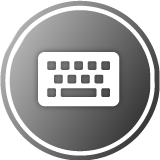-
Posts
41 -
Joined
-
Last visited
Social
-
Twitter
maxoelerking
MaxOelerking's Achievements
-
 nclahammer reacted to a blog entry:
Did We Break Max Kepler?
nclahammer reacted to a blog entry:
Did We Break Max Kepler?
-
Twins fans over the past few season have been extremely critical of Max Kepler and his terrible offensive production vs LHP. The criticism was rightly deserved, because his numbers were atrocious. Twins territory has been pleasantly surprised by his improvement vs LHP, but now his numbers vs RHP are dropping. Here are Kepler's splits from 2015-2017. vs RHP: .258/.332/.471 vs LHP: .188/.259/.288 So against RHP, Kepler was solid at the plate. He reached base and hit for power. Against LHP, his numbers reflected that of a pitcher... Now, here are Kepler's splits in 2018. vs RHP: .200/.299/.335 vs LHP: .288/.360/.576 With 269 plate appearances, there is no need to panic just yet. His numbers vs RHP are not as bad has his previous numbers vs LHP. Plus, his numbers vs LHP are not much better than his previous production vs RHP. In short, no, obviously our German right fielder is not broken. If he can become consistent vs both RHP and LHP, he will become much tougher to matchup against, and overall be more productive day in and day out.
-
For this ranking, I will be making a list of the top 5 hitters and top 5 pitchers since 2000. The criteria for the ranking will consist of both stats and awards. Please comment below and let me know what you think. Pitchers 5.) Francisco Liriano IP: 783.1 ERA: 4.33 WHIP: 1.34 K/9: 9.05 Awards: 1 All-Star Game 4.) Scott Baker IP: 958.0 ERA: 4.15 WHIP: 1.26 K/9: 7.23 Awards: N/A 3.) Brad Radke IP: 1366.0 ERA: 4.16 WHIP: 1.25 K/9: 5.29 Awards: 1 All-Star Game 2.) Joe Nathan IP: 463.1 ERA: 2.16 WHIP: 0.96 K/9: 10.9 Awards: 4 All-Star Games 1.) Johan Santana IP: 1308.2 ERA: 3.22 WHIP: 1.09 K/9: 9.5 Awards: 2 Cy Young Awards, 3 All-Star Games Hitters 5.) Brian Dozier PA: 4029 AVG: .250 OBP: .327 SLG: .451 Awards: 1 Gold Glove, 1 All-Star Game 4.) Corey Koskie PA: 2834 AVG: .278 OBP: .373 SLG: .465 Awards: N/A 3.) Torii Hunter PA: 5020 AVG: .269 OBP: .322 SLG: .470 Awards: 7 Gold Gloves, 2 All-Star Games 2.) Justin Morneau PA: 5350 AVG: .278 OBP: .347 SLG: .485 Awards: 1 MVP, 2 Silver Slugger Awards, 4 All-Star Games 1.) Joe Mauer PA: 7584 AVG: .308 OBP: .391 SLG: .441 Awards: 1 MVP, 5 Silver Slugger Awards, 3 Gold Gloves, 6 All-Star Games
-

Keeping Up With Twins Picks: 2018 Edition
MaxOelerking commented on Ted Schwerzler's blog entry in Off The Baggy
I like our first round pick in Larnach. Plus power, and has a simple swing that he should't have to change much when he starts playing pro-ball. Hopefully he can work on getting into is back leg more and really develop a swing that can do some major league damage. -
Here are just some ideas for a possible trade involving the Twins third baseman. Baltimore Orioles Trade Assets: Manny Machado SS Darren O'Day RHP Tanner Scott LHP Chance Sisco C Hunter Harvey RHP San Diego Padres Trade Assets: Tyson Ross RHP Mackenzie Gore LHP Michael Baez RHP Adrian Morejon LHP Robbie Erlin LHP Philadelphia Phillies Trade Assets: Sixto Sanchez RHP Adam Haseley OF Seranthony Dominguez RHP Nick Pivetta RHP Nick Williams OF
- 5 comments
-
- miguel sano
- trade
-
(and 2 more)
Tagged with:
-

Would you trade Sano for up and coming catcher?
MaxOelerking commented on huhguy's blog entry in Blog huhguy
Sano has mega power, he has value and is still young. If the right deal came around I would not mind if the Twins moved him but it would have to be for at least 1 all-star or 3 top prospects or some flavor of both, assuming we also give up an additional player. -
We would have to give up a lot for Cutch, and I don't think we are close enough to sell the farm for one guy just yet. Especially a player who is currently slugging under .400
-
 MaxOelerking reacted to a comment on a blog entry:
4th OF - Andrew McCutchen?
MaxOelerking reacted to a comment on a blog entry:
4th OF - Andrew McCutchen?
-
In the event that the Twins are in position to be buyers at the trade deadline, here are some possible trade prospects the Twins could realistically go after to make a run at the postseason. 1.) Tyson Ross SP Padres Ross has been the bright spot in an otherwise "business as usual" San Diego Padres rotation. Assuming SD will be looking for young talent come the trade deadline, Ross could be on the market at 31-years of age. The Twins can also afford to take on Ross' contract that is $1.75M and ends after this season. Ross is not the prototypical superstar rental, but if he continues having the season he is, he could be a cheap addition to the pitching staff. Ross has been non-existent the past few years but if you look back at 2014 and 2015, Ross averaged 196 innings pitched with a 3.03 ERA and 3.11 FIP. In short, Ross was getting no help from the Padres and still pitched well, averaging 204 K's with a 9.4 K/9. Stats aside, Ross is a slider fastball guy who's not going to blow anything past a hitter but spots his pitches well and gets a lot of ground-outs with his fastball. He also gets a lot of swinging strikes with his slider (36.6% whiff rate). One last thing to note is that of Ross' 7 starts this season, only 1 of them didn't result in at least 6 innings pitched, which is 2.) Santiago Casilla RP Athletics The Twins could obviously use more bullpen depth going into the postseason. Casilla could be a really good pick up for a few reasons: 3x World Series champ (SF Giants), closer experience, 5 pitch arsenal. Santiago Casilla would come in at age 37 with 14-years and 3 world series championships worth of experience and add to the veteran presence in the bullpen and clubhouse. Casilla's postseason numbers are impressive too, only giving up 2 earned runs in 19.2 innings pitched. Casilla has experience as a closer to add to his career resume as well, which increases his value since the Twins have struggled to find a reliever to finish games. Lastly, Casilla mixes his pitches well throwing a sinker in the mid to low 90's with a slow curveball in the high 70's/low 80s. He can also mix in a 4-seam fastball, slider, and changeup. 3.) Darren O'Day RP Orioles This would be another nice piece to add to the bullpen. O'Day has the numbers that make him a solid relief pitcher and at $9M per year ending after the 2019 season would not be terrible either. The biggest question here would be how much the Orioles want in return. Comment below and let me know who you think the Twins should go after.
-

Rortvedt's MWL Encore Is Off To Strong Start
MaxOelerking commented on Steven Buhr's blog entry in SD Buhr/Jim Crikket
Glad to hear we have an up and coming catcher. Definitely a position that a lot of clubs lack. Especially when teams transition their top catchers to other positions. -
 Tom Froemming reacted to a blog entry:
Love/Hate with Statcast
Tom Froemming reacted to a blog entry:
Love/Hate with Statcast
-

Reinforcements Needed in Relief
MaxOelerking commented on Ted Schwerzler's blog entry in Off The Baggy
Upper echelon for spin rate on his slider *crickets* 95 mph fastball *crickets* The only reasonable explanation is that he's only pitched in 3.1 innings so far and they want a larger sample size. If they let Morrison start as often as they do I don't see why they would pull the plug on Kinley this early. Not saying its right or wrong but that is probably their thought process.- 8 comments
-
- minnesota twins
- tyler duffey
-
(and 2 more)
Tagged with:
-
With all the technological advancements made in baseball, its easy to get lost in the mess. There's new stats that make zero sense to some people, but the issue is just understanding what they tell us. Batting average and ERA are easy to grasp. What percentage of this batter's at-bats have resulted in hits? How many earned-runs does this pitcher give up on average in 9 innings? These are how we read stats, because they answer our questions. So what question does launch angle and exit velocity answer? "It just shows how hard a player hits the ball.", is an answer that makes me cringe because its so far from the truth. Yes, it is used to see who's hitting the ball the hardest, but that's not a question we need answered. The question shouldn't be "how hard can he hit it?", rather we should be asking "how well does he hit it?" and "how often does he hit it well?". What makes for a well hit ball? The magic numbers lie between 10 to 30 degrees. Batted balls that are hit at these angles off the bat have the greatest chance to fall for a hit (or better yet home runs). Why does this matter? Because if a player is able to hit a ball consistently this way, he will have more hits (higher batting average for those who will never be convinced that Statcast is a good thing). Even if a guy can't hit the ball 100+ mph, he can have success with a good launch angle. There is an opposite end of the Statcast love-hate spectrum. Those that gush over exit velocity and nothing else. This group of people are just as bad, if not worse, than Statcast haters. This is the over excitable group that is driving the non-believers away. Don't get me wrong, I love it when guys hit 110+ mph moonshots. But if a guy hits a ball 100 mph and grounds out to third, its just a ground out. Launch angle should be the most important thing we look at when it comes to analyzing hitters. Is it okay for players to have low launch angles? Absolutely! Dee Gordon is wasting his time if he's trying to lift the ball over the fence because he's built and has the ability to slap the ball up the middle and leg out singles. For players like Mookie Betts or Chris Taylor, launch angle is extremely important because they lack size and and blazing speed. Betts (5'9" 180lbs) and Taylor (6'1" 190lbs) look the exact opposite of power hitters, but they are still able to hit 20+ homers a year. Chris Taylor is a perfect example of a player that revived his career by improving his average launch angle. Below are his average launch angle, average exit velocity, % of batted balls hit between 15 and 30 degrees, along with his corresponding stats. 2015 and 2016 Avg. Launch Angle............................11.0 deg. Avg. Exit Velocity...............................86.6 mph Stats: .187/.236/.277 2017 and 2018 Launch Angle....................................12.0 deg. Exit Velocity.......................................87.1 mph Stats: .281/.344/.488 It took just a 1 degree increase in average launch angle and 0.5 mph increase in average exit velocity to go from a -1.0 WAR player to a 4.9 WAR player. Chris Taylor is not the only example either. Here is another example, this time looking at Anthony Rendon. This was a player who was already a solid hitter who was able to progresses even more. 2015 and 2016 Avg. Launch Angle............................14.5 deg. Avg. Exit Velocity...............................90.5 mph Stats: .268/.346/.419 WAR: 4.4 2017 and 2018 Launch Angle....................................18.2 deg. Exit Velocity.......................................89.6 mph Stats: .300/.399/.521 WAR: 6.0 Rendon's improvements also show us that a slight decrease in average exit velocity does not cause is drop in offensive production. Rendon also increased his average launch angle by 3.7 degrees and had a huge jump in offensive value, making him one of the most underrated third basemen in the MLB. In closing, if I was not able to change anyone's mind about the use of Statcast data, I hope I was able to prove that this information has a place in the game. Radar guns were once seen as overrated too when collecting data on pitchers.
-
 Twins and Losses reacted to a comment on a blog entry:
Tackling Pace of Play The Right Way
Twins and Losses reacted to a comment on a blog entry:
Tackling Pace of Play The Right Way
-

Tackling Pace of Play The Right Way
MaxOelerking commented on Twins and Losses's blog entry in Twins and Losses
I agree, they may reel in 50 new fans who like the shorter games while losing 500 lifers who hate all the changes. I heard an idea where they might implement different clocks in the lower minor league levels. That way, new players will be trained to work at a realistic pace without the clocks when they get up to the big leagues. I like that better than actual rules in place to try and shorten the games. I'm all for training guys to not redo their batting gloves after each pitch and not having the catchers go out and talk every time the pitcher throws a ball in the dirt, but I do not like having the rules that may limit them when its necessary.- 1 comment
-
- rob manfred
- jose berrios
-
(and 2 more)
Tagged with:
-
 Hosken Bombo Disco reacted to a post in a topic:
Article: Game Thread: Twins @ Yankees, 4/23@6:10pm CT
Hosken Bombo Disco reacted to a post in a topic:
Article: Game Thread: Twins @ Yankees, 4/23@6:10pm CT
-
 MaxOelerking reacted to a post in a topic:
Article: Game Thread: Twins @ Yankees, 4/23@6:10pm CT
MaxOelerking reacted to a post in a topic:
Article: Game Thread: Twins @ Yankees, 4/23@6:10pm CT
-
Today I wanted to break down how the Twins pitchers can beat the Yankees top hitters. I will talk about where to get swings and misses, outs, and where to simply avoid placing the ball (danger zones). Brett Gardner Gardner is a pest at the plate. Very tough to strikeout and always battles. Swings and misses don't happen often, (lowest on Yankees at 4.62%) but he is patient (10.46% called first strike) and he struggles with pitches on the outer half or down and out of the zone. Getting him into two-strike counts is going to be key since his wOBA is only .218 with two strikes. Even if he doesn't swing and miss, most of his outs come on outer half pitches anyway. Gardner is most dangerous on pitches that are left up in the zone or leak into the middle of the zone. KEYS: Get ahead early, miss out of the zone. Aaron Judge With Stanton hitting behind Judge, its going to be tough to pitch around. Definitely want to limit base runners with this much power in the lineup. Judge has had trouble making contact with pitches low and away so if Twins pitchers can pound that corner, he won't have much success (62.9% strikes on pitches low and away). He has also yet to get a hit on a fastball up in the zone. Pitchers with good velocity will have success mixing in elevated fastball that he will either swing under or change his eye level. Anywhere over the plate is dangerous against Judge. He barrels up a ton of pitches that are anywhere over the heart of the plate. KEYS: Spot pitches low and away, elevate the fastball. Giancarlo Stanton We all know about the crazy power Stanton has and how dangerous of a hitter he can be. So far, he's struggled a bit this season, mostly because he's swinging and missing 17.09% of the time. Fastballs and sliders have made up over 76% of his swinging strikes. His biggest weakness is the high fastball. Any pitch that doesn't get up enough will probably be crushed so the Twins need to make sure to miss high instead of laying fastballs over the heart of the plate or hanging breaking-balls that he can send into orbit. KEYS: Elevate the fastball, breaking-balls out of the zone. Didi Gregorius Gregorius has been hot so far this season as the Yankees SS. His strength is that he does not miss on pitches in the zone. He has had a lot of success so far on low pitches that he can elevate. Gregorius is a tough customer to strikeout, so keeping the ball up and away from his danger zone is key. He's a tough out so Twins pitchers need to hit their spots while staying in the strikezone because he is not a guy that chases a ton of pitches. KEYS: Challenge in the zone, stay away from low strikes. Gary Sanchez Sanchez is another hitter that can be dangerous when he gets his pitch. Pitches up and in or on the outer half he struggles with so that will be a key for Twins pitchers to stay on those edges. Almost 50% of his swings and misses come on slider low and away out of the zone. Sanchez has success hitting pitches on the inner half or anything left over the heart of the plate. KEYS: Slider down and away. If the Twins pitching staff has success against these hitters, then we should be successful in the Bronx.
-
Something that I though would be fun, making a 2018 Twins roster with only similar players. For example, Mike Trout who is a career .305/.409/.566 and plays CF would be similar to Mickey Mantle .298/.421/.557. Enjoy! CATCHERS Wellington Castillo .259/.319/.430 { Jason Castro .233/.312/.388 } John Hicks .232/.289/.395 { Mitch Garver .193/.281/.368 } FIRST BASE Keith Hernandez .296/.384/.436 { Joe Mauer .309/.392/.443 } Kevin Maas .230/.329/.422 { Logan Morrison .242/.328/.428 } SECOND BASE Bret Boone .266/.325/.442 { Brian Dozier .251/.328/.454 } SHORTSTOP Stephen Drew .252/.318/.423 { Jorge Polanco .266/.322/.417 } THIRD BASE Evan Longoria .269/.340/.482 { Miguel Sano .254/.346/.498 } UTILITY Julio Lugo .269/.333/.384 { Eduardo Escobar .253/.301/.398 } STARTING PITCHER ( IP / ERA / WHIP ) James Shields 2429.1 / 3.98 / 1.271 { Ervin Santana 2383.1 / 4.02 / 1.265 } Charles Nagy 1954.2 / 4.51 / 1.419 { Jose Berrios 231.2 / 4.66 / 1.312 } Steve Parris 753.1 / 4.75 / 1.505 { Kyle Gibson 745 / 4.68 / 1.438 } Danny Salazar 587.1 / 3.82 / 1.263 { Jake Odorizzi 726.2 / 3.81 / 1.223 } Josh Johnson 998 / 3.40 / 1.268 { Lance Lynn 986.2 / 3.39 / 1.292 } Let me know what you think or who you think would be a better fit!
-
I agree and disagree with you here: yes, putting the ball in play with two strikes can prove to be important. I too hate to see a lot of strikeouts, ESPECIALLY LOOKING! But...something that gets missed is that the "2 strike approach" has changed in the MLB. Here are the hard hit ball stats in 2-strike counts: 2002 19.7% 2003 21.3% 2004 23.7% 2005 24.7% 2006 24.2% 2007 28.8% 2008 24.4% 2009 23.9% 2010 27.2% 2011 21.5% 2012 26.3% 2013 27.5% 2014 27.0% 2015 26.6% 2016 28.9% 2017 29.2% 2018 30.7% * through April 19th Basically what has happened is that players want to stay on the attack. This results in more strikeouts, but it also results in more extra base hits. The trade off is higher K rate, but higher HR rate as well.
- 4 comments
-
- strikeouts
- pitchers
-
(and 2 more)
Tagged with:










